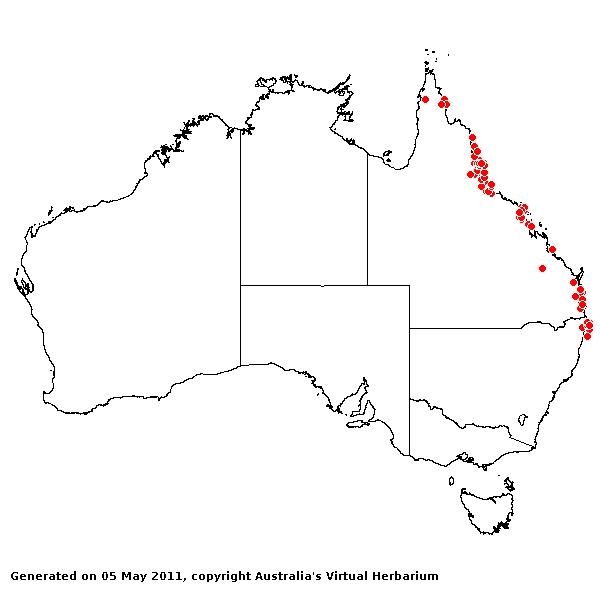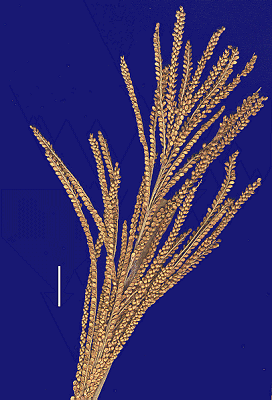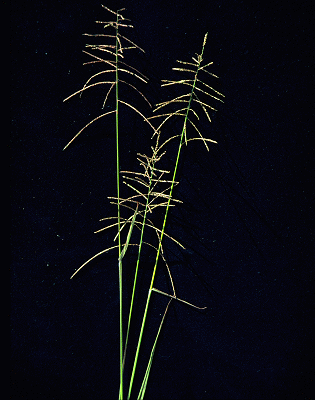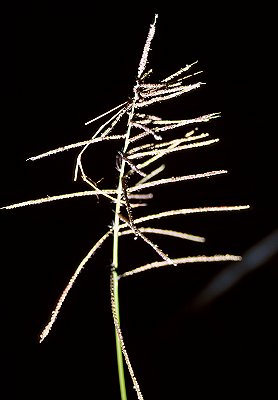Paspalum paniculatum* L. Syst. Nat.
ed.10, 2: 855 (1759).
Classification. (GPWG 2001) : Subfamily
Panicoideae. Paniceae.
Type of Basionym or
Protologue Information: Jamaica:, Browne s.n. (LT: LINN-79.1).
Key references
(books and floras): [2002] D.Sharp & B.K.Simon, AusGrass, Grasses of
Australia, [2008] S.W.L.Jacobs, R.D.B.Walley & D.J.B.Wheeler, Grasses
of New South Wales (329).
Illustrations:
[2008] S.W.L.Jacobs, R.D.B.Whalley & D.J.B.Wheeler, Grasses of New South
Wales, 4th edn (329).
Habit.
Perennial. Rhizomes present. Stolons absent. Culms erect, 30–215 cm tall, 2–7
-noded. Mid-culm nodes pubescent. Lateral branches sparsely branched.
Leaf-sheaths hairy. Leaf-sheath auricles absent. Ligule an eciliate membrane,
2–3 mm long. Leaf-blades 8–50 cm long, 6–30 mm wide. Leaf-blade surface smooth,
indumented.
Inflorescence.
Inflorescence compound, a panicle of racemes. Racemes few or numerous, 7–60,
spreading, 4–12 cm long, 3–6 mm wide, bearing 90–180 fertile spikelets on each.
Central inflorescence axis 5–20(–30) cm long.
Spikelets.
Spikelets sessile and pedicelled. Fertile spikelets 2-flowered, the lower
floret barren (rarely male), the upper fertile, comprising 1 basal sterile
florets, comprising 1 fertile floret(s), without rachilla extension, orbicular,
dorsally compressed, 1.3–1.4 mm long.
Glumes. Glumes
thinner than fertile lemma. Upper glume orbicular, 1.3–1.4 mm long, hyaline or
membranous, without keels, 3 -nerved. Upper glume surface indumented. Florets.
Basal sterile florets 1, barren, without significant palea. Lemma of lower
sterile floret 100 % of length of spikelet, membranous, 3 -nerved.
Fertile lemma 1–1.4 mm
long, without keel.
Continental
Distribution: Africa, Tropical Asia, Australasia, Pacific, North America,
and South America.
Australian
Distribution: Queensland, New South Wales.
Queensland:
Cook, Moreton, North Kennedy, South Kennedy, Wide Bay. New South Wales:
North Coast, North-Western Slopes.
Notes.
Introduced. In tropical heaths, tropical and subtropical rain forests, tropical
and subtropical wet sclerophyll forests, and tropical and subtropical sub-humid
woodlands. A weedy species which prefers moist sites from forest margins to
marshy areas. Flowers Feb.-Aug.






